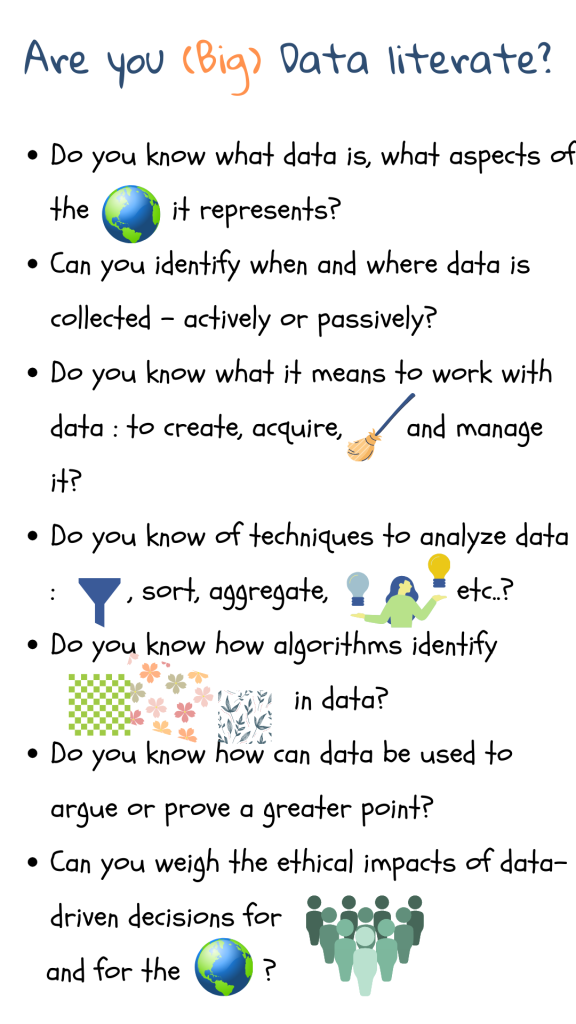Additional Content
More on Big Data
The general practice of saving all kinds of data is called Big Data1. Doing this makes sense since data storage has become cheap and powerful processors and algorithms (especially natural language processing and machine learning) make analysing big data easier2.
As discussed in the video , big data is characterised by huge (volume), rapidly generated (velocity), disparate types (variety) of data-generated from multiple sources. The data thus gleaned tends to be incomplete and imprecise (veracity), and its relevance tends to change over time (volatility). Sophisticated algorithms are required to combine, process and visualise this kind of data. Yet, inferences drawn from them, especially when combined with traditional data, can be powerful and thus, worth the effort2.
Some experts go beyond the three or five Vs2 and stress the three axes that make up big data:
- Technology that makes it possible to gather, analyse, link, and compare large data sets. Analysis that identifies patterns in large data sets in order to make economic, social, technical, and legal claims.
- The belief that “large data sets offer a higher form of intelligence and knowledge that can generate insights that were previously impossible, with the aura of truth, objectivity, and accuracy”3.
- Big data analysis “can potentially identify areas where students struggle or thrive, understand the individual needs of students, and develop strategies for personalised learning.”

1 Schneier, B., Data and Goliath: The Hidden Battles to Capture Your Data and Control Your World, W. W. Norton & Company, 2015.
2 Kelleher, J.D, Tierney, B, Data Science, London, 2018.
3 D’Ignazio, C., Bhargava, R., Approaches to Building Big Data Literacy, Bloomberg Data for Good Exchange, New York, 2015.
4 General Data Protection Regulation (GDPR), European Union, April 2016.
5 Ethical guidelines on the use of artificial intelligence and data in teaching and learning for educators, European Commission, October 2022.
